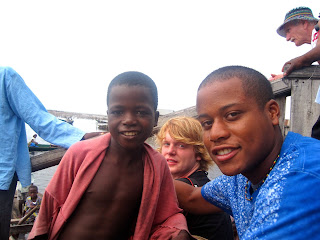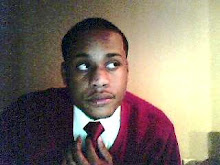



 Togo and Benin. Our ship docked in Tema, which is almost an hour outside of Accra, the capital. It was very difficult planning and getting around because of the roads were in poor condition and taxis were few and far between. Our game plan was to head to Cape Coast and see the slave castles, the mouth of the slave trade. But that didn’t happen. When we arrived at a recommended hotel, Avis told us that it wasn’t a good day to visit Cape Coast because it was a weekend. I was disappointed…..
Togo and Benin. Our ship docked in Tema, which is almost an hour outside of Accra, the capital. It was very difficult planning and getting around because of the roads were in poor condition and taxis were few and far between. Our game plan was to head to Cape Coast and see the slave castles, the mouth of the slave trade. But that didn’t happen. When we arrived at a recommended hotel, Avis told us that it wasn’t a good day to visit Cape Coast because it was a weekend. I was disappointed…..We decided to do a city tour of Accra. We went to the W.E.B DuBois Museum, it was closed. Then we had lunch, at the recommendation of my friend Maame-Yao who studied abroad in Ghana last semester, visiting Auntie Muni's Wakye. (Waa-chee) is a delicious mixture of rice and beans, the customer than has the option to mix in spicy beef, fish, plantains and noodles. It was a delicious meal. We met a Ghanaian guy, David who explained to me the secret of dating and marriage. It was really funny because all the girls I was with disputed and argued.
Next we visited the Accra City museum and the city square. We learned about Ghana’s independence of 1957 and the pride they had especially from Obama’s visit last summer. After we went to the Kwame Nkrumah Museum, Ghana’s first president had an international legacy that brought him to form grand alliances and put Ghana at the forefront of west Africa. Nkrumah is credited to being responsible for Ghana’s success today. We saw where his wife is buried and the beauty that made up their memorial. I had a fascinating conversation with the museums curator, it is believed that when Nkrumah died, in Russia it was a plot by the CIA and the Russian government. But I didn’t feel that made any sense because at that time America had little interest in Ghanaian region and it being the time of the Cold War I felt the likelihood of US-Russo cooperation was unlikely.
Next door to the museum was a market. The market was very lively, we separated from the group and found a couple of men who owned a small shop. Somehow they persuaded me to buy a lot of very nice pieces of art, Figurines, pictures and even a wooden cup. The man guy, Sam, ran me bone dry and walked Amira and I to the ATM to have more money. On the way I spotted a station wagon with a Spelman College sticker on it. We joined them for a drink and we danced to Ghanaian music, I ended up buying a wine drum. The tour guide then took us to the mall where we went to get snacks and buy magazines. The mall was closed and I wasn’t interested in the snacks Ghanaian grocers had to offer so we decided to wait by the car until the tour guide returned. We planned on meeting Corey and Bruck at a spot in downtown Accra but they never showed up. We were hungry and decided to eat, we found a restaurant and it seemed pretty popular. We all had different foods, I ordered pizza and Ann and I split some babaganosh and hummus. Best Babaganosh I have ever had!
For whatever reason they were slowest with Amiras food so she found the owner, who was also Lebanese and complained. The owner gave us complementary Kibe and we got to sit in the VIP section of the restaurant and meet his friends, all of which were from Lebanon and Syria. After waiting 30 minute for Amira to eat we all were really tired, we took a cab to drop Amira off at a hotel to meet her dad. As she was checking in the lights went off, a frequent occurrence in Ghana. We exchanged good byes and it was off to the ship. Kelly, Ann and I gave the taxi driver the address to the terminal but he must have stopped about 10 times asking people where to go. Driving from Accra to Tema was a hassle. The roads were dreadful. 20 minutes into Tema we were pulled over by the police. They made our driver get out, open the trunk and furnish what looked to be a bribe. Several miles down the road was another one of these “Checkpoints”. This time they flashed the light in the car and questioned us. They asked Kelly and Ann where they were going and they asked me whether I was Ghanaian or not, we showed them our IDs and they let us go. Weary, we returned to the MV Explorer, it was about 1230AM and my time in Ghana was complete, disappointing as it was the next morning I’d leave for Togo and Benin.
BENIN
630AM the next morning we met in the union, had breakfast, left the ship and boarded a bus. Over the next six hours we drove from Tema, Ghana through Togo to Benin. We stopped at the Togolese border for about 45 minutes. It took them so long to process our visa and passports. A nap and snack later we were onto Togo, but only for a short while because the drive through Togo was not long at all. Before long we were in Benin. In Benin we stopped at Musee D'histoire De Ouidah. It was here at Ouidah that we learned the prominent role this Portuguese post had in the trans-Atlantic slave trade. Mostly to the countries of Brazil and Cuba.
Ouidah is home to a rich Voodoo tradition, for Benin, as well as Togo, were the birthplace of this practice. After the museum we visited the Benin Snake temple. We learned that the snake, namely the python is highly respected in the voodoo world chiefly as protectors. We entered a small yard like area where large trees grew. Around the tree were several small fenced in areas and adjacent to those was a small round hut. We learned these fenced in areas were to make sacrifice to voodoo gods. The tree, which seemed to be a weeping willow, was said to be a sacred tree that if it grew long enough it could catch a man or women and kill it. The circular hut was the actual Python temple. I took my shoes off, out of respect, and entered around me lay at least 50 pythons coiled in one another. Our guide picked one up and put it around my neck. There was a church just beyond the doors of the snake yard. Our guide explained hat sometime snakes get out and go into the church, but because each religion respects one another the church people often return the snakes, as opposed to killing them.
Next we visited the Foret Scaree De K'passe Ouidah, the Voodoo Forest of Kpasse. The forest is peppered with contemporary sculptures of voodoo idols. As we enter we meet Legba the guardian, this seated figure feature a perturbing phallic symbol and horns, asserting his masculinity and aggression. Legend has it that he was cursed with this sexual burden because of his promiscuity. The rest of the forest was filled with mythical voodoo characters, ones for life thunder, eternity and forgiveness, nearly every aspect of living. The life in the forest was rich, we saw giant millipedes, lines of hug ants, bats and birds.
We soon returned from the forest back to the Ouidah square where we shopped. Juana and I played with some of the local kids. It was here where my french came in useful. I found myself speaking with a young boy and slid him where I could find a Benin soccer jersey, before long he was leading me to a small shop. He asked the shopkeeper about the jersey and he then furnished a bag with the Benin National Football club shorts and soccer jersey. I tried it on, paid the shopkeeper and slid the kid a couple of francs for commission. I did some more haggling and then we were all back of to our hotel in nearby Cotonou, Hotel Du Lac. We sat down to a decent meal but soon my roommate Patrick and I were watching the CNN coverage of the Nuclear Summit and were fast asleep.
The next day we visited "The Venice of Africa", Ganvie, Benin. This fascinating aquatic society thrives off of its canoe building, fishing and water agriculture industry. It sits on Lake Nokoue in Cotonou. The largest lake village in Africa borders Nigeria. We took a canoe to the center of Ganvie, led by our guide and another. The guide was a native to the lake village and spoke mostly in French. But he told us that the local people don't really like their pictures taken because they feel it takes apart of their soul, similar to the indigenous people of the south pacific. He showed us the fish and prawn fishing and the ingenuity of the local people, displayed by the stilted homes and buildings over the lake. We went to a shop and purchased shirts. The kids rowed over to us and asked us for chewing gum. Lucky for them, I'd bought a bag of gum balls while we waited to be cleared into Benin, in Togo. Aaron, my buddy from Indiana, and I practiced our french and gave them gum balls and then said our Au revoirs. Next we tours ti the sixth of Ganvie, not to far from Nigeria, then stopped at shop/hotel. While there we saw kids wade in the water to cross the street, people carrying large loads to their homes or store and we saw and dry patch where kids learn to walk. We saw kids shower, play and wave to us from their homes. In the hotel/shop we bought different clothes and saw a deadly spider on the table where we sat and waited. After Ganvie, we headed to do even more shopping in Porto Novo. I bought African Art, clothing, and figurines. I found a man who was reading a book on African Politics. We spoke for about an hour outside of his shop about corruption in African regimes, US-Ghana and US-Benin relations and the opinion of Obama.
We left ad had diner at a nearby restaurant, probably the worst pizza I've ever had.
We returned to the hotel. Juana, and a bunch of our friends went swimming, played Marco polo, and jumped from the diving board. Juana was afraid her lip ring would come out upon impact, so I held her hand and she held her face as we took a plunge.
The next day, our last day we left rather early and went to Lome, the Capital of Togo and did a brief city tour. There was not too much to see. We saw the independence square (1956) and went to a the national museum of independence which really showed the dynamic of modernization from tradition.
We were all so tired at this point so there my adventure of West Africa ended with an 8hr bus ride back to the ship

No comments:
Post a Comment